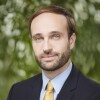NSF and NIST Directors, Senators Sound Alarm on Rising International Competition
The Senate Commerce, Science, and Transportation Committee convened a hearing
NSF Director France Córdova and NIST Director Walter Copan testified about steps their agencies have taken in response to the AICA and echoed concerns expressed by several senators that U.S. R&D leadership is facing increasingly stiff competition.
Sen. Cory Gardner (R-CO), one of the main authors of the AICA, presided over the hearing. Citing the National Science Board’s latest Science and Engineering Indicators report
“While this isn’t a hearing on funding, I would like to reiterate my strong support for robust funding increases at both NSF and NIST,” Gardner said, adding, “Unless we dedicate more support to our nation’s R&D enterprise, we will lose out to competitors like China who are working to displace the U.S. as the world’s greatest innovator.”
Sen. Bill Nelson (D-FL), the top Democrat on the committee, called
Alluding to the warnings that were the impetus for the original COMPETES Acts, he said, “These findings echo what we have heard time and again from the National Academies of Science [sic] as well as industry leaders like Norm Augustine, who first sounded the alarm 10 years ago.”
NSF and NIST directors echo competitiveness concerns
Gardner noted he recently met with a group advocating for the U.S. to increase federal spending on R&D as a percentage of its GDP from the current level of 0.7 percent to 2 percent. He asked Córdova to reflect on what effects such an increase would have. She replied that an influx of that magnitude would provide “tremendous horsepower” to the nation in the global R&D race, adding,
We’re looking over our shoulders and, as you said, seeing China and other countries coming up faster and faster behind us where before they used to be way behind.
Copan also warned that the international R&D landscape is changing, saying there have been “very significant moves around the world to try to take the high ground around standards leadership.” He also said that focusing on funding alone is insufficient:
We have a very new environment around international competitiveness now that goes beyond investment strictly in fundamental science and technology.
Directors offer AICA implementation highlights
Córdova and Copan summarized their agencies’ actions to implement the AICA, providing details in their written testimony (available here
Córdova said the AICA represents a “bipartisan endorsement of the mandate and mission” of NSF that “affirms” its long-standing merit review procedures, enhances transparency, and serves to codify — rather than change — how the agency makes funding decisions. In particular, Córdova described steps NSF has taken to improve the non-technical descriptions of award abstracts.
Strengthening oversight and support for research facilities was another focus of the AICA. Córdova noted how NSF has appointed its first chief officer for research facilities
Among the actions Copan highlighted, he sketched out the contours of the AICA-mandated long-term laboratory strategic plan, which is still in development. The plan articulates two new themes that will guide NIST’s investments: (1) provide a foundation of trust in new industries, and (2) apply new technologies to revolutionize mission delivery.
Under the first theme, NIST will pursue efforts aimed at “enabling the future bioeconomy [and] unleashing the economic potential of the Internet of Things.” Under the second, it will take actions directed at “revolutionizing commerce through quantum measurements [and] enhancing mission-critical research through artificial Intelligence and data.”
OSTP participates via letter
Beyond NSF and NIST, the AICA included several provisions directed at the White House Office of Science and Technology Policy. In lieu of a witness, OSTP sent a letter
Sen. Maggie Hassan (D-NH) drew attention to the absence of an OSTP representative at the hearing. She noted that although she has twice written to President Trump urging
Joining the hearing partway through, Committee Chair John Thune (R-SD) said
The letter from OSTP says the office has updated the charters of the relevant NSTC subcommittees to reflect the AICA requirements and that it was “delighted” to participate in the LBNF/DUNE groundbreaking ceremony
Córdova describes shutdown effects
Sen. Gary Peters (D-MI), another primary author of the AICA, said that beyond funding levels, the importance of funding stability was a main takeaway of the roundtables the committee held when developing the legislation. He asked the witnesses what effects Congress’s repeated use of stopgap spending measures have had on their agencies.
Córdova replied that senior agency leadership has to divert significant time to prepare for a potential shutdown. Because of the brief shutdown last month, she said, NSF canceled 10 grant proposal review panels involving hundreds of people. She also noted that on any given day, NSF has between 200 and 600 visitors who are involved in proposal evaluation.
Offering a further illustrative anecdote, Córdova described how last year’s winners of the Nobel Prize in Physics are scheduled to deliver a lecture to NSF employees on Feb. 9, in part as a thank you for the agency’s decades of support for the Laser Interferometer Gravitational-wave Observatory. Because the current stopgap funding measure is set to expire that day, she said, the potential for another shutdown has cast a pall over those plans.


